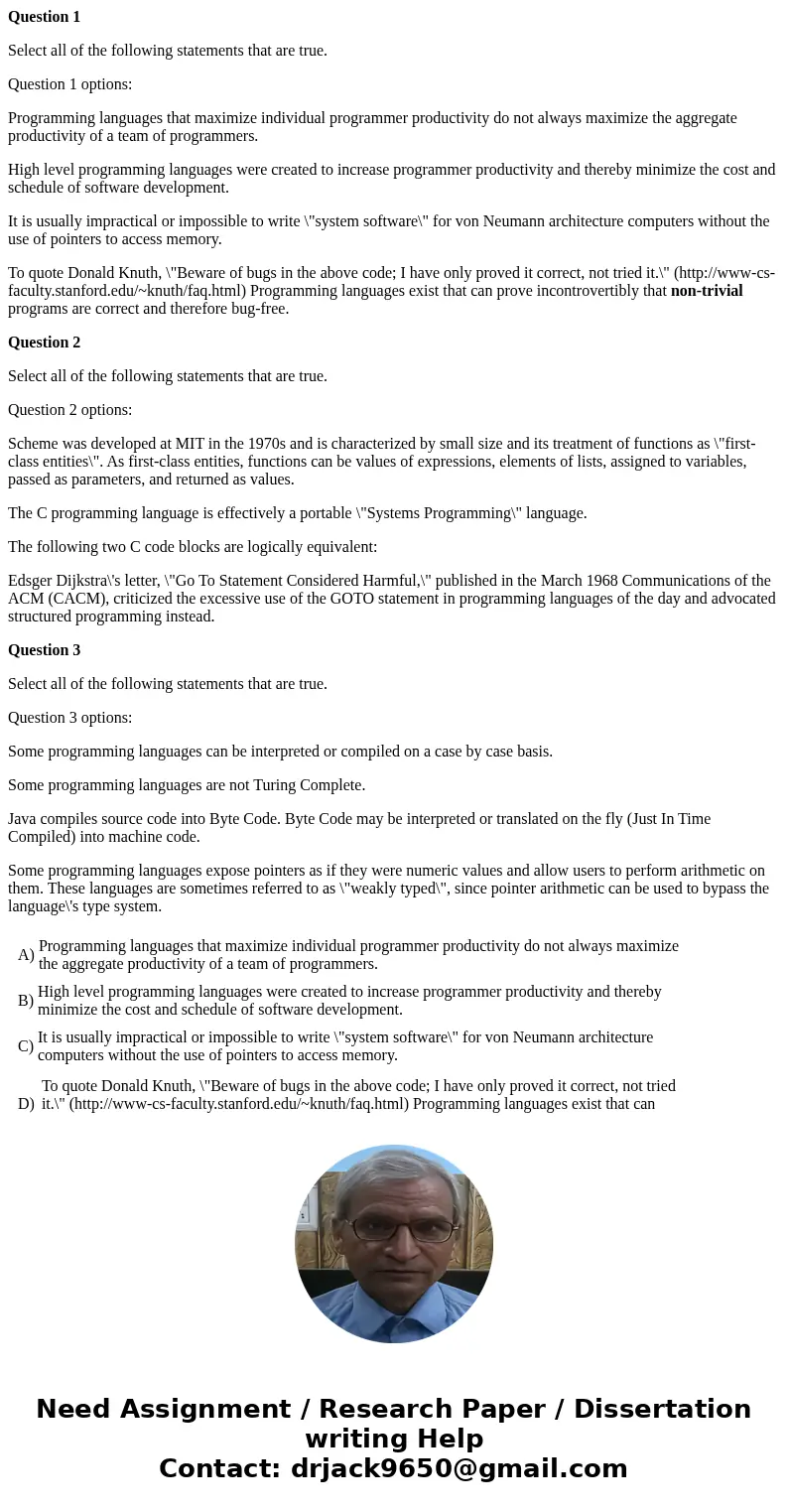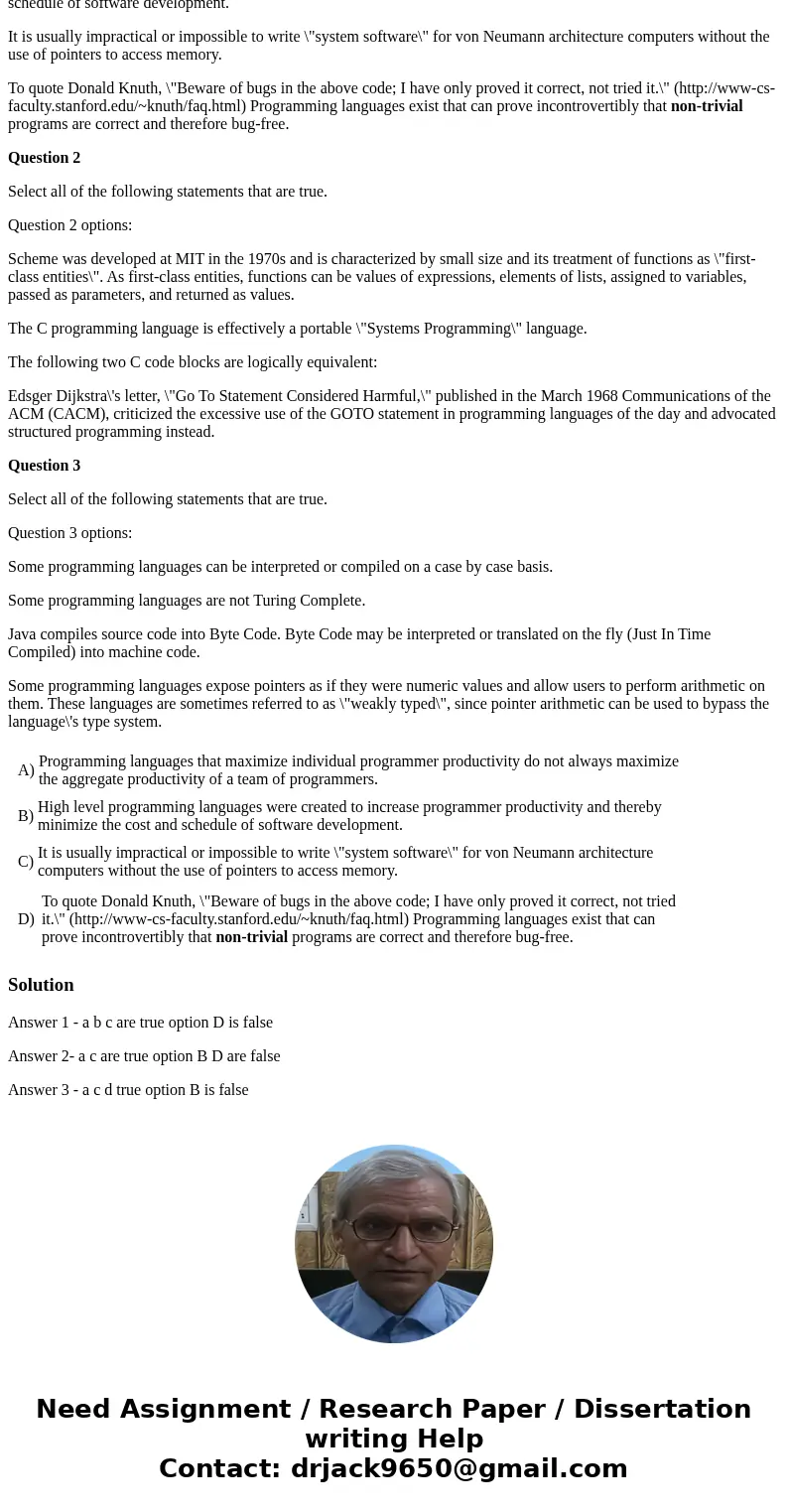Question 1 Select all of the following statements that are t
Question 1
Select all of the following statements that are true.
Question 1 options:
Programming languages that maximize individual programmer productivity do not always maximize the aggregate productivity of a team of programmers.
High level programming languages were created to increase programmer productivity and thereby minimize the cost and schedule of software development.
It is usually impractical or impossible to write \"system software\" for von Neumann architecture computers without the use of pointers to access memory.
To quote Donald Knuth, \"Beware of bugs in the above code; I have only proved it correct, not tried it.\" (http://www-cs-faculty.stanford.edu/~knuth/faq.html) Programming languages exist that can prove incontrovertibly that non-trivial programs are correct and therefore bug-free.
Question 2
Select all of the following statements that are true.
Question 2 options:
Scheme was developed at MIT in the 1970s and is characterized by small size and its treatment of functions as \"first-class entities\". As first-class entities, functions can be values of expressions, elements of lists, assigned to variables, passed as parameters, and returned as values.
The C programming language is effectively a portable \"Systems Programming\" language.
The following two C code blocks are logically equivalent:
Edsger Dijkstra\'s letter, \"Go To Statement Considered Harmful,\" published in the March 1968 Communications of the ACM (CACM), criticized the excessive use of the GOTO statement in programming languages of the day and advocated structured programming instead.
Question 3
Select all of the following statements that are true.
Question 3 options:
Some programming languages can be interpreted or compiled on a case by case basis.
Some programming languages are not Turing Complete.
Java compiles source code into Byte Code. Byte Code may be interpreted or translated on the fly (Just In Time Compiled) into machine code.
Some programming languages expose pointers as if they were numeric values and allow users to perform arithmetic on them. These languages are sometimes referred to as \"weakly typed\", since pointer arithmetic can be used to bypass the language\'s type system.
| ||||
| ||||
| ||||
|
Solution
Answer 1 - a b c are true option D is false
Answer 2- a c are true option B D are false
Answer 3 - a c d true option B is false


 Homework Sourse
Homework Sourse